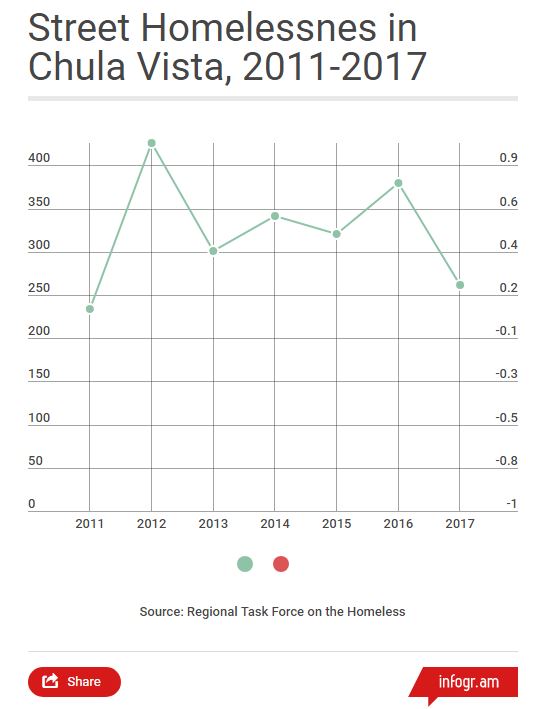Chula Vista’s Third Avenue is lined with breweries and tasting rooms. Two new tasting rooms have been approved in National City. In Imperial Beach, Coronado Brewing Company is building a 10-barrel brewery with a 7,000 square-foot restaurant.
Anywhere else in craft beer-devoted San Diego County, openings like these would be unremarkable. But the South Bay has long been one corner of the county the craft beer boom hasn’t touched.
At the end of 2015, San Diego County had 114 breweries and brewpubs – only two of which were located in the South Bay, according to a National University System Institute for Policy Research study.
When I asked the brewers, bar owners, city planners and real estate agents in the South Bay to explain the disparity, some cited land use issues and local politics, but most pointed to assumptions about who’s drinking beer there. Citing the region’s generally low incomes and its minority-majority population, some brewers, sales representatives and distributors from outside the South Bay have assumed residents there only have taste buds for macro brews, like Bud Light, Corona and Dos Equis.
The South Bay’s mini craft beer boom, though, is upending those assumptions.
Perceptions and the #SouthBayUprising
“The biggest hurdle has been the perception that the South Bay either didn’t want [craft beer], wasn’t ready for it, or didn’t have the market for it,” said Eddie Trejo, co-owner of Machete Beer House in National City. “All these misguided perceptions: It’s low-income; there is mostly Mexicans and Filipinos; they don’t want [craft beer].”
When he and co-owner Joann Cornejo opened Machete in February 2015, they became National City’s first craft beer-centric business. Though many breweries were supportive in getting their brews on tap, uncertainty about the South Bay was still common. Many sales representatives for distributors and breweries would say, “We aren’t selling new accounts right now,” putting Machete on a “waitlist,” which is the polite way in the sales world for saying, “No,” Trejo said.
Trejo also worked as a tour guide for breweries. Whenever he would pick up a group from Chula Vista and bus them north to the county’s well-known breweries and brewpubs, Trejo said his colleagues would let out a collective groan: “Why are they coming? Why do they want craft beer? Do they even know?”
Those reactions are familiar to Gonzalo Quintero, general manager of La Bella Pizza Garden on Chula Vista’s Third Avenue. Though La Bella has been serving craft beer for the past 20 years, the first to do so in the South Bay, Quintero looked to expand its tap list in 2012. During the expansion, craft beer sales reps told him much of the same: Only light beers and Mexican beers would sell in the South Bay. Quintero eventually got enough craft brews to fill the majority of La Bella’s 24 handles, and overall, sales have increased. Despite the growth, the skepticism remained.
Earlier this year, a San Diego brewery from outside of the South Bay invited Quintero to try its beers. Quintero thought he was there to shop for a new brew. During the meeting, however, one of the brewery’s staff members accidentally told Quintero the real reason they had invited him: The brewery wanted to use La Bella as a gauge for how its beers would do in the South Bay.
“This isn’t a petri dish for you,” Quintero said of the brewery, which he declined to identify. “There are a lot of people on this block putting their savings, their blood, sweat and tears into it.”
In 2015, Trejo started the hashtag #SouthBayUprising, which has become the unofficial rallying cry for the push to bring more craft beer options to the region. In 2016, Trejo, along with other craft beer bar owners, local brewers and advocates for the South Bay, formed the South Bay Craft Beer Business Association.
To understand the void that South Bay’s craft beer scene is working to fill, it is helpful to look at places of abundance.
Where Craft Beer Does Thrive
San Diego City Council District 6, which includes northern central neighborhoods like Kearny Mesa and Mira Mesa, is known as the “beer belt.” It’s home to about two-thirds of the city’s craft beer breweries. Since the end of 2015, eight new breweries have opened, said Chris Cate, the Council member for District 6. He says breweries are attracted to the district since much of the land is already zoned for industrial use, the close proximity to White Labs, which manufactures liquid yeast for brewers, as well as wanting to be near internationally known brewers like Karl Strauss, Green Flash and AleSmith. “There is a close-knit relationship that they have,” Cate said. “They want to make sure others are successful.”
Todd Davis, a commercial realtor who was involved with Stone Brewing’s first lease in 1996 and has worked with The Lost Abbey, Ballast Point and Karl Strauss, said craft beer business owners think of the easiest place for the customer base to get to them. “If you’re central,” Davis said, referring to places like North Park, “you can still get people from the South Bay.”
Tony Raso, who is opening a bar in Chula Vista, also works at Fall Brewing’s tasting room in North Park. “I card people every day at work. I work five nights a week, and about one in every five, or one in every six IDs that I check says ‘Chula Vista,’” Raso said.
Although consumers from the South Bay are seemingly lured north, the phenomenon validates what advocates, business owners and brewers from the area have been saying all along: The South Bay drinks craft beer.
Vince Vasquez, an economist at the National University System Institute of Policy Research, thinks the growing thirst for craft beer within the South Bay correlates with rising family incomes among Latino households. In Chula Vista, nearly 60 percent of the population is Hispanic, and the median household income is $64,576, slightly higher than county and state levels.
For Jill Davidson, president of the San Diego Brewers Guild, the craft beer scene was always on its way to the South Bay. It was just a matter of time and geography. “The epicenter was more north,” Davidson said. “It blossoms at the epicenter, and it blossoms outward.”
She doesn’t believe the assumptions that culture and ethnicity were ever holding back the craft beer scene. She points to the success of Baja’s craft beer industry.
“As craft continues to grow, expand and collaborate across the border, it is going to help identify the power of San Diego beer and Baja beer,” Davidson said. “I think there is so much opportunity there, and it kind of exemplifies what an amazing culture exists.”
Changing Minds – and Regulations
Alan Cassell, a Chula Vista realtor who owns several properties along Third Avenue, thinks it’s not just assumptions about people who live in the South Bay that have held back the success of craft beer there. There are assumptions about people who live outside the area, and whether they’re willing to go there.
“Most people probably just remember Chula Vista as a place you pass when you go to TJ,” Cassell said.
Real estate agents, brewery investors from La Jolla and North County and two business groups from North Park and Ocean Beach that originally looked to brew or sell craft beer passed on the opportunity to do business in Chula Vista, he said.
![Photo by Jamie Scott Lytle]()
Photo by Jamie Scott Lytle
Mario Maldonado has a beer at La Bella Pizza Garden in Chula Vista.
To combat the stigma, the city has doubled down on efforts to put out the welcome mat for potential businesses and investors.
In May 2014, the city’s principal planner, Scott Donaghe and Craig Ruiz, principal economic development specialist, wrote a letter to breweries throughout the county.
“The city is committed to streamline the entitlement process to make locating and opening a brewery, brewpub or tasting room, smooth and simple,” the letter read.
Donaghe took brewery owners on walking tours that included promising properties. The city also got creative with antiquated land use policies that barred alcohol production beyond certain industrial zones. To draw brewers to Third Avenue, Donaghe led an effort to define the function of brewing craft beer as akin to baking bread – after all, they share the same main ingredients of water, yeast and grain.
National City is also functioning under restrictive land use policies when it comes to alcohol production and even consumption.
“Alcohol is sort of a polarizing thing,” said Martin Reeder, the principal planner for National City. Reeder says residents are still wary of a growing bar scene, after National City Boulevard earned a bad reputation for noise, drunk driving and public urination decades ago.
Reeder has assured the city that the craft beer scene is different: higher prices, a different atmosphere and different clientele.
Reeder’s explanation was enough for the City Council to approve tasting rooms for Embarcadero Brewing and Novo Brazil, which brews in Eastlake.
Native Sons of the South Bay
Cassell is working with several business groups with ties to the area. One of them, Three Punk Ales, is reshaping an old department store into a brewery and tasting room. Two of the three punks, Steve Garcia and Kevin Lewis, met at Bonita Vista Middle School and grew up in Chula Vista. Recently, a San Diego brewer outside of the South Bay told Garcia that he was entering a dead market. Garcia brushed the comment aside.
Three doors down, at the corner of Third Avenue and Davidson Street, Raso, also a Chula Vista native, is planning to open a craft beer and wine bar named Bar Sin Nombre, the result of a last-minute scramble to fill out liquor license paperwork.
“I’m raising my kids in a community where my wife and I were both raised. And I can help create a neighborhood, where, when they grow up, they want to go and hang out with their friends, versus what I had to do, and shoot north,” Raso told me.
Across the street, local artist Pete Caso is finishing up a colorful mural to serve as the temporary storefront during the construction of Groundswell Brewing’s new tasting room. The owner, Kevin Rhodes, is a Chula Vista resident.
Raso points down the street to Chula Vista Brewery, its logo, “CVB” with baseball cap lettering displayed on the front. Timothy Parker, the owner, has lived in Chula Vista for the past 16 years.
Raso looks out toward the bars and breweries along Third Avenue. “I have full confidence that if it’s done right, it’s going to work here forever.”


















 In California, the newest commodity to be engulfed by the convenience of the delivery model is medical and adult use cannabis. Consumers view cannabis no differently than they do a pair of headphones from Amazon or a large poke salad from DoorDash. We want to place an order from our smartphone and trust that it will be delivered to us promptly and in good condition.
In California, the newest commodity to be engulfed by the convenience of the delivery model is medical and adult use cannabis. Consumers view cannabis no differently than they do a pair of headphones from Amazon or a large poke salad from DoorDash. We want to place an order from our smartphone and trust that it will be delivered to us promptly and in good condition.



